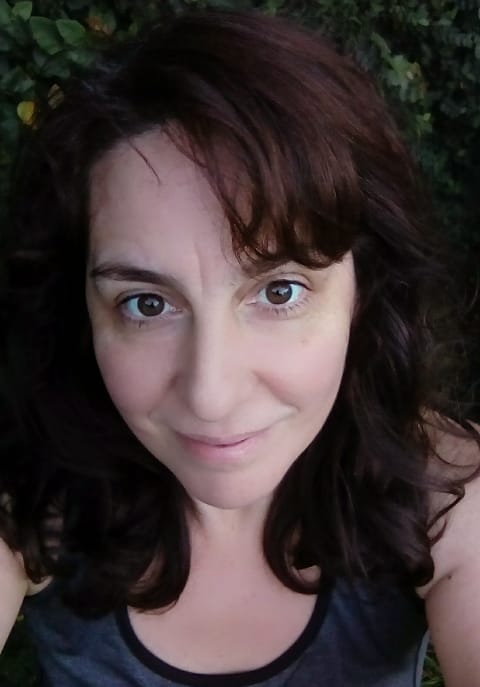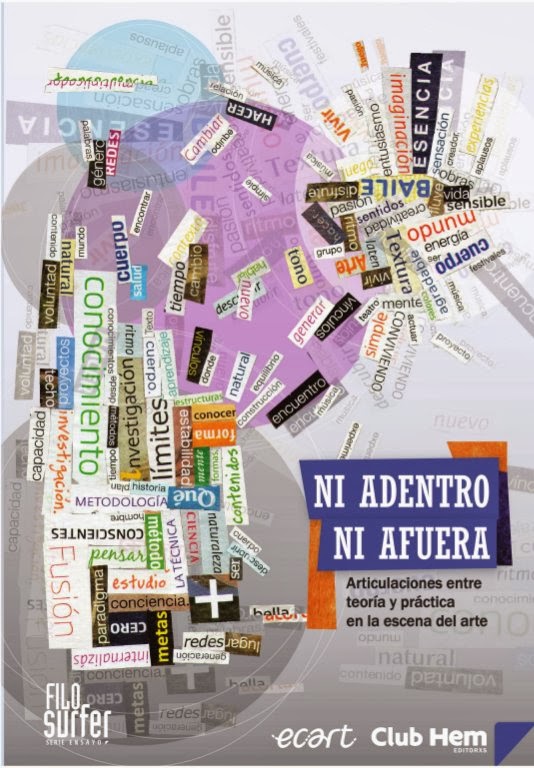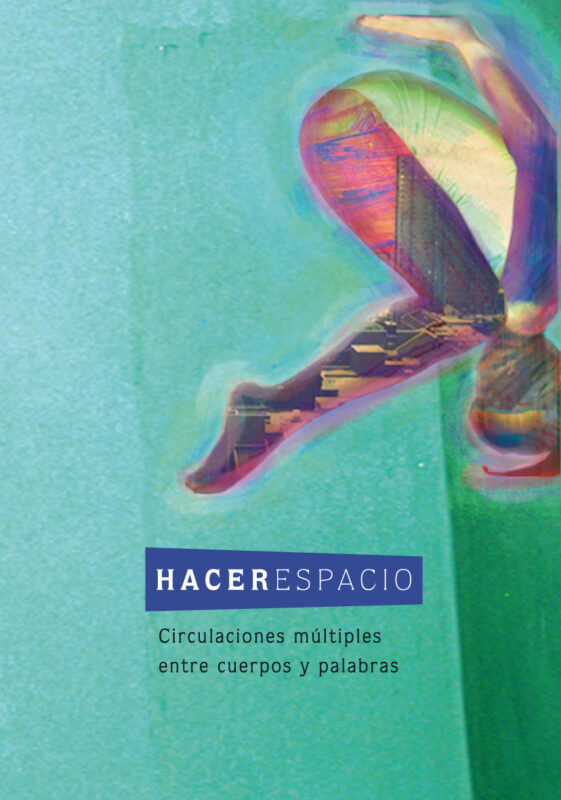
Converging threads: anthropology, dance, life
The Study Group on the Body (GEC) has a birthday on May 28, 2008. On that day, we had our first meeting in a space at the School of Social Work at the National University of La Plata (UNLP). That was my workplace. I was pursuing a Ph.D. in dance, and a friend told Mariana Sáenz and Mariana del Mármol about me. Both wanted to bridge the gap between their dance background and anthropology training. The anthropology program was in the Faculty of Natural Sciences, and they couldn’t find a research team there. They contacted me, and we said, ‘The group we’re looking for doesn’t exist, so let’s create it.’ We invited students from other fields – sociology, and psychology – who were also involved in theater, dance, and music. We knew about a research team at the University of Rosario, led by Manuela Rodríguez and Yanina Mennelli, that combined body anthropology with artistic practices, such as Afro dances with box drum singing.
In our first meeting, there were about eight or nine people, which made us happy. At that time, there was a possibility to form study groups. We named ours the ‘Study Group on the Body,’ and the first thing we did was start a reading group. Our initial readings were related to the anthropology of the body and the anthropology of emotions. We also began working on autoethnographies, which are methodological approaches to incorporating our personal experiences and stories into our research.
Sometimes, it’s a more significant effort to compartmentalize what exists in one’s life rather than working from the intertwining threads. Our first text was titled ‘Converging Threads,’ we aimed to unite the different spheres of our lives. The desire that motivated us to work together came from the impossibility of separating theory and practice. From my perspective as an anthropologist, this is at the core of our training: working in praxis. Our collaboration was a collective effort aimed towards the future. Our team members shared a joint interest in artistic practices and the body, but we engaged with people with backgrounds in one field or another. Some focused on researching dance or were involved in dance with little overlap. We created a space for interaction between different research forms and encouraged them to engage in dialogue. We’ve been exploring this ‘amphisbaenism,’ as we call it – the intersection of social sciences, philosophy, and the arts. .
However, forming our team was more than a matter of will and desire; we also had institutional support. The support from public policies and the state is crucial. I began my Ph.D. thanks to a CONICET scholarship I received in 2003/2004 when research became recognized as work. Regarding our group, the creation of the IDIHCS (Institute of Humanities and Social Sciences) and the availability of office spaces for our work played a pivotal role. Between 2015 and 2019, our lives became disorganized, and our work became challenging. We needed access to the spaces we used for our activities. The team never disbanded, but we kept working because we already had structure and dynamics.
Being many things in one body
Currently, we have around thirty people in the GEC. New members join as we develop different lines of work. Our first public-facing initiative was in 2010 when we organized the ECART (Platense Meeting on Body Research in Performing and Performance Arts). It featured roundtable discussions among individuals from various fields who had common interests. In the second ECART, we invited participants to conduct workshops and performances related to the body in artistic practices. Based on a shared core of discussion, different people presented their projects through performances, workshops, presentations, or audiovisual materials. Early on, we noticed the interest generated by this format, where people came together to discuss similar topics from various perspectives and backgrounds. Based on a shared core of discussion, different people presented their projects through performances, workshops, presentations, or audiovisual materials. Early on, we noticed the interest generated by this format, where people came together to discuss similar topics from various perspectives and backgrounds. .
Since 2011, the ECART has continued to include the crossover of disciplines: exponential-audiovisual-performance-workshop. We intended to hold it every two years. The 2015 event happened right after the runoff election. People met, embraced, and cried, sensing something significant was coming. We decided we needed to maintain these spaces, which would be more critical than ever for resistance. However, in 2017, we couldn’t organize it. We needed both the venue and the people available to plan the event because we were busy surviving or engaged in other forms of activism. We eventually held it in 2018 at the UNLP Arts Center. The theme was ‘Art, Body, and Resistance.’ We introduced small discussion groups and workshops related to different forms of resistance: one on community work, art processes, and social transformation linked to art and community; another on genealogy, memory, and archives, and another on gender, sexuality, and non-conformity.
From the ECART events, we compiled two books, inviting participants to write short texts in response to a guiding question. The first book is ‘Neither Inside Nor Outside: Articulations Between Theory and Practice on the Art Stage.’ The central question explored in the book is what theory can do for practice and what practice can do for theory. The second book, ‘Creating Space,’ delves into the relationship between body and space.
There is a connection between research and the specific creative processes of independent arts in the circuit. I remember a work we did called “Bisunt.” That’s when we realized how much we could contribute to creative production through research and our scientific work. Before that, we had created another piece, “Anfisbena: A Visit to the GEC Museum.” The members brought into their different groups what they had experienced in their research projects.
“Anfisbena” was a dance performance with a lot of text, where we explored the condition of “amphisbaenism”: being many things within one body and exploring the possibilities of that. In a museum section, we displayed materials that spoke to this life, from conference certificates to little dance costumes sewn by our mothers in our childhoods. Additionally, there were audio elements the sound of words accompanying these objects. We aimed to work with materiality, bringing our archives into the museum, an essential space for anthropology students.

Trim scenes from an emotional journey
We have been reading a lot about the body’s materiality, discussions, experiences, representations, and theories about the body. Over time, we started delving into theoretical productions of the affective turn. We began to see how the capacities to affect and be affected by something are formed. We observed that affect played a significant part in the web of social relationships, and these affective relations exist not only among people but also between people and things. Affective atmospheres can be intentionally generated; something even studied for organizing political campaigns.
Simultaneously, while we began exploring the affective dimension, the issue of activism came into play. In 2017, we initiated a process of reconstructing records and worked on organizing a memorial event at the Faculty of Natural Sciences. People were telling us, “You have to do something,” regarding a mural created in 1994 as an initial tribute. So, we reached out to individuals from the faculty at that time and people involved in the 1960s and 1970s to discuss and decide what we wanted to do with the new mural. When listening to our comrades who had been there during that period, the everyday space, the catacombs, always came up: a semi-basement of the Museum of Natural Sciences. Therefore, the artwork had to be located there.
One day, we explored the basement to see what it could evoke. That space spoke to us about the lives that had passed through it. The sensation of closeness and contact between eras is intense throughout the museum, particularly in that specific location. The same formaldehyde smell persists from back then. Furniture covers every wall in those basement corridors; the same furniture touched the same benches where disappeared comrades sat.
We wanted to delve into what of the lives that had passed through there was still present. From this perspective, we aimed to understand what these individuals were passionate about. We sought to discover what had been cut short but, most importantly, what had endured. During the discussions in the workshop to create the mural, it emerged that apart from discussing their activism, we also needed to talk about the passion they felt for science, whether it was Geology, Biology, or Anthropology. That, too, was a part of their lives. We wanted to delve into the realm of affection: their roles as friends, parents, and mothers. There is a poem by Carlos Ayub in the artwork about the museum. Carlos was a geologist and a poet, and we also found others who had written in a poetic register. The composition of the artwork is based on these elements, comprised of small scenes taking you on a journey through the basement, scenes that gradually “turn up the volume” on the feeling of passing through there, knowing that you’re walking the same corridor that other Anthropology students who disappeared had once walked..

Recovering the memory of the struggles
From some individual theses produced within the team, stage designs have been created in various spaces of independent theater, dance, and circus. In some cases, they supported the request or management of laws, such as the Dance Law or the Circus Law. Research shows many ways to support specific demands to the State. One is by recovering and making the history of these struggles visible. Many times, processes of struggle begin with the feeling of starting from scratch. And when we look back, we find that these processes began long before and have been interrupted at different times for various reasons. Understanding how they were conceived, what happened, and why they were interrupted helps us try to find better ways to organize and articulate these demands. It helps us determine the focus of our activism, with whom, and in what ways. Recovering the memory of these struggles and documenting how collectives organize in the present is very valuable. This visibility adds depth and temporal density to these struggles, part of what underpins them: the time they have endured.
Research can also provide a unique perspective that can put us in the shoes of others, in the different positions with which we need to engage in dialogue. Understanding our role from various government agencies, finding common ground, and navigating from one place to another is essential. These are the two core aspects: on the one hand, documenting these struggles, and on the other hand, understanding how things work for a collective advocating for something like the National Dance Law; for example, a detailed understanding of how the government functions is helpful. It’s about making lawmakers understand the sector’s needs and where they are willing to listen.
Research also helps us problematize, reflect upon, and question the assumptions that shape us because many of these demands are related to how we perceive ourselves: unveiling how we understand artistic work, what we believe it means to be dancers, and what professionalization in dance entails.
I remember a discussion on an open radio show. A contemporary dance colleague said she had taken dance to the streets as something innovative in a square where there were already murga groups and kids dancing breakdance. Why do we think we are doing something groundbreaking without looking at what’s happening around us, what’s already taking place? All forms of dance have something to tell us. There is still a boundary between what is considered dance and what isn’t, and that boundary is limiting us. It’s legitimate to say what we like but never think it’s superior. When you don’t see the other things happening, even if you don’t say it, you are placing them lower. Let’s open our eyes to what’s happening in dance because that cross-pollination will revitalize it. The goal should be to radiate more and see what’s happening elsewhere.